#garo magazine
Explore tagged Tumblr posts
Text

Garo (ガロ) / Seirindō (青林堂) / Feb 1998 issue
#avant garde manga#90s manga#underground manga#alternative manga#gekiga#nekojiru#garo magazine#>100 notes#seirindo#issue month: february#ガロ#青林堂
171 notes
·
View notes
Text
Ikuko Hatoyama Interview


Encounter with Manga (まんがとの出会い)
【 Manga You Read as a Child and Left an Impression on You 】
Did you read works by Moto Hagio-sensei?
Hatoyama : I don’t really remember buying manga magazines much… As a child, I was always busy reading the enormous collection of Osamu Tezuka’s complete works that my father bought every month. Maybe that’s why I was in a constant state of being “full” from manga.
I first read Moto Hagio-sensei’s works when a slightly older friend lent me The Heart of Thomas after I turned twenty. I approached it with a feeling of reverence, and it left a deep impression on me. I can only imagine how exciting it must have been to experience such incredible manga in real time, looking forward to new releases every month. I feel envious just thinking about it.
What about Shonen manga?
Hatoyama : I used to borrow Weekly Shonen Champion from a boy who lived in the same housing complex as me during its golden era.
Which works left an impression on you?
Hatoyama : Definitely Macaroni Horen-so! Of course, Black Jack as well!
What stood out to you about Macaroni Horen-so?
Hatoyama : Apart from the fascinating characters and rhythm, what struck me the most was the sense of subculture embedded throughout...both in the cover art and scattered within the story. This unique appeal was something I didn’t find in other manga. Even as a grade schooler, it was a shocking experience for me.
Through Macaroni Horen-so, I learned about things like “punk fashion” and Queen's A Night at the Opera (laughs). There was even a parody of Junichi Nakahara’s Himawari, a girls’ magazine cover, which today more people might recognize, but back then, I doubt many Shōnen Champion readers knew about its origins (laughs).
Did You Experience the Influence of Katsuhiro Otomo and the New Wave Movement?
Hatoyama : Absolutely. I even tried copying the explosion scenes from Domu (laughs). Not that it was very useful, though.
How Did You Start Reading June and Garo?
Hatoyama : I discovered June by chance at a local bookstore, noticing its cover. As for Garo, I first picked up a 1970s issue at a second-hand bookstore and started reading from there.
【 Participation in Doujinshi Activities 】
Wasn’t part of a traditional manga club (manken), but collaborated with three classmates from her high school’s art course to create a photocopied doujinshi.
Hatoyama : At that time, underground publications like Yaso series by Peyotl Kobo, Tokyo Grand Guignol theater performances, Garo-style manga by artists like Suehiro Maruo and Suzuki Oji, and the rise of Nagomu indie bands were at their peak.
Given that context, the content of our doujinshi was… well, just as you might imagine (laughs).
【 Becoming a Manga Artist 】
When Did You Decide to Become a Manga Artist?
Hatoyama : Until the second year of junior high school, I used to buy a magazine called Poetry and Märchen, and at the time, I admired the profession of an illustrator.
However, as expected, my weakness in coloring became a fatal flaw...
What Inspired You to Pursue It?
Hatoyama : When I realized there was a world of freeform manga, like what was published in Garo.
Most of the Artists We've Interviewed Decided to Become Manga Artists at an Early Age. What About You?
Hatoyama : Manga artist → Illustrator → Manga artist...that was basically my journey.
Once You Decided, Did You Talk About It with Others?
Hatoyama : Everyone knew I was always drawing manga as a child, and there was an unspoken understanding...people just looked the other way (laughs).
【 The Path to Debut】
It is noted that you debuted when you won a selection in Garo in 1987.
Hatoyama : Yes, I submitted my work. After submitting three times, I received a handwritten letter of encouragement and advice from the legendary Garo editor-in-chief, Katsushi Nagai.
After that, I was informed that my work would be published.
The piece was a four-panel manga titled "Moyou no Aru Tamago" (Patterned Egg).
William Gibson – Why Do You Want to Read Him During the Rainy Season?
Hatoyama : I’m not sure why, but when the rainy season comes, I feel like reading his works.
Did Encounters with Manga, Movies, or Novels Influence Your Creations?
Hatoyama : I think they influenced me a lot.
Did They Also Shape Your Personal Preferences?
Yes, very much so.
【 Starting to Draw Manga 】
Did You Practice by Copying Other Manga?
Hatoyama : Not really. Instead, I just kept drawing the characters I imagined as I felt like it.
Did You Like Drawing from a Young Age?
Hatoyama : As long as I had rough paper and a pencil, I could entertain myself by drawing anywhere without getting bored.
Rather than drawing spontaneously for fun, I was the type who had a clear goal...like “I want to draw a girl in this outfit” or “I want to draw this particular animal.”
Did Your Doodles Evolve Into Creating Your Own Stories?
Hatoyama : By kindergarten, I was making personal manga booklets at home, stapling rough paper together.
The main character was an eggplant girl.
What Made You Start Drawing Manga Seriously?
Hatoyama : Around my first year of high school, I secretly tried to turn Hermann Hesse’s Beneath the Wheel into a manga on blank report paper.
I justified it as something that would be “educational.”
【 Influences and Art Studies 】
Which Artists and Works Have Influenced Your Manga?
(Original text does not specify names here.)
Did You Ever Study Art in a Formal Setting?
Hatoyama : My high school was a regular school, but it had an experimental course specialized for students aiming for art universities.
Eleven hours a week were dedicated to art.
We had to do charcoal sketching all the time, and I had no motivation for it, so I just fooled around.
Were You Part of a Manga Club in School?
Hatoyama : I’m not even sure if my school had a manga club…
How Did You Practice Using Pens and Coloring?
Hatoyama : Even now, I’m not really used to pens or coloring.
I’ve always been terrible at coloring, but I never really practiced either…
Did Drawing with Colored Pencils or Crayons as a Child Help Develop Your Sense of Color?
Hatoyama : Since kindergarten, I preferred monochrome pencil drawings with detailed lines rather than using crayons.
As for my sense of color… I’m not sure if I have one or not.
【 First Impressions of June and Garo 】
What Were Your Initial Impressions of June?
Hatoyama : My reaction was something like, “Huh, wow...” (laughs).
I bought it because I wanted to read a manga by Fumi Tamada (see Figure 1).
Her new wave style struck me more deeply than Garo works...I was amazed to discover that such manga existed.
What About Garo?
Hatoyama :I first came across Garo during the time when Seishi Hayashi’s Golden Pollen was featured on the cover.
Inside, there were incredibly dark works like Kazuichi Hanawa’s Misebaya-goya and Masami Furukawa’s The Legend of Murasaki.
They were so dark that just owning the book felt overwhelming.
Still, whenever I found a new issue, I eagerly bought and stocked up on them.
I remember stumbling upon Garo in a regular bookstore during high school and thinking,
“Oh, wait… it’s still being published?”
【 Anime and Film Preferences 】
Do You Watch Anime?
Hatoyama : Not really. Nothing comes to mind.
What About Hayao Miyazaki’s Works?
Hatoyama : Just to follow expectations…
I like the pirate grandmother from Castle in the Sky.
You mean Dola? She’s strong with mechanics, quick-witted, and great at calculations.
She has everything I lack (laughs).
What About Films? Many Say Your Works Have a 1970s European Film Aesthetic, Including Classics Like Death in Venice.
Hatoyama : I don’t watch those kinds of films systematically.
I only absorb surface-level things like the atmosphere and fashion of that era.
I could never say I was deeply influenced by them.
Visconti’s meticulously crafted films are wonderful, but if I had to pick my favorite coming-of-age film, I’d say Zéro de Conduite by Jean Vigo.
I first learned about it from novelist Mayumi Nagano.
What Do You Like About Zéro de Conduite?
Hatoyama : It’s bizarre.
It’s a short film about boys’ boarding school life, but in the final ceremony scene, the guests sitting in chairs turn out to be flimsy cloth dolls…
For me, it surpasses even Visconti (sorry, Vis!).
【 Literature Influences 】
Which Novelists Influenced You?
Hatoyama : I read authors like Taruho Inagaki, Hyakken Uchida, early Kenzaburō Ōe, Hermann Hesse, and Yukio Mishima in my teenage years.
I encountered Inagaki’s One Thousand and One-Second Stories when I was just starting to draw manga...I found a copy at a second-hand bookstore.
Rather than simply being drawn to it, it felt like discovering a missing piece of myself, and it was a shocking experience.
Enjoying the process?
Hatoyama : It’s enjoyable… but actually drawing is quite tedious!
【 Setting Up Angles 】
How do you decide on angles?
Hatoyama : I don’t draw storyboards, so I go straight from my mind to the manuscript paper, making adjustments as I go.
Do you struggle with building scenes?
Hatoyama : Not particularly...I don’t feel like it’s difficult.
【 Screen Presentation Using Tone Work 】
Your use of tone work seems to have deepened over time with each new work.Do you feel that way?
Hatoyama : I hadn’t really thought about it! Ideally, I’d like to create drawings that have enough impact even without tones...just with penwork alone.
Why did you incorporate such artistic techniques?
Did you want to change the atmosphere of the worlds you depict?
Hatoyama :
Perhaps that intention naturally influenced my artistic style.
【 Early Works in Tsuki ni Hiraku Eri 】
Your early works included in Tsuki ni Hiraku Eri seem to depict characters with a much simpler touch.
Hatoyama : In recent years, as I’ve had more opportunities to share my real thoughts and words through my website and other platforms, I feel like my boy characters have started to reflect more of my “true” personality.
Back then, they felt much more “put together” or formal.
【 Color Work 】
What Materials Do You Use for Coloring? Can You Explain Your Process?
Hatoyama : First, I ink the outlines using waterproof Martins Ink.
Then, I use opaque watercolors to layer shading and color, starting with the darker areas.
If I want to emphasize certain shadows, I go over them again with Martins Ink.
I also use colored pencils and poster colors when necessary.
On the Influence of Little Charlotte Lynn
Hatoyama : Thanks to Little Charlotte Lynn, the last 12 pages of Shoemaker became a kind of baroque-style comedy.
【 Depicting Different Locations 】
Your settings sometimes take place in Japan, sometimes abroad. Do you differentiate between them?
Hatoyama : Until now, I have avoided making nationality or time period explicit...no clear “Japan” or “America.”
But in Shoemaker, for the first time, I incorporated specific settings like “London,” currency references (pounds, euros), and “World’s End” (a shop famous for its connection to designer Vivienne Westwood).
Through that, I felt like I rediscovered an intensified sense of unreality within reality.
【 Character Design 】
What do you focus on most when drawing characters?
Hatoyama : Their faces…? Making sure they don’t all look alike (laughs).
Your fashion sense is always wonderful. Do you use references? Do you sketch?
Hatoyama : Old films are a great reference for fashion. When I can’t keep cutouts, I make sketches.
If a particular collar shape catches my eye, I quickly jot it down in a sketchbook.
【 On Humor and Narrative Execution 】
Do you enjoy drawing works with a comedic touch, like Lou-dau-daw?
Hatoyama : I like clear, exaggerated humor...the kind that makes people go “Whoops!” and fall over (laughs).
Will you create more comedy works in the future?
Hatoyama : Coming up with trivia and references is the hard part…
The scene in Shoemaker where someone experiences an incredibly crude humiliation with a time delay was brilliant.
Do you like that kind of dramatic effect?
Hatoyama : Yes, that approach feels more natural to me.
I like a body type that isn’t too skinny but still reveals a healthy, natural frame...where you can clearly see elements like wrist bones and collarbones.
【 Pen Work and Background Art 】
Your linework, especially for character outlines, is strikingly clean. Do you have a particular focus on pen techniques?
Hatoyama : If you look closely, my lines are actually quite shaky. Sometimes they tremble.
I wonder if I should try using a slightly thicker line style.
What kind of pen do you use?
A Zebra round pen.
How did you develop your distinct pen style?
Hatoyama : It just happened while drawing… but honestly, my lines are so thin that they sometimes annoy me.
Your backgrounds are incredibly detailed. Researching references must be difficult.
Hatoyama : Collecting materials is fun.
It feels like building a miniature garden or assembling diorama parts piece by piece to construct a world.
【 Typography and Text in Manga 】
You put a lot of care into lettering, including book designs. Can you tell us about that?
Hatoyama : Thank you.
But I’ve been told, “Instead of neatly lettering everything, a rougher, handwritten style adds more atmosphere.”
Accurate lettering doesn’t suit my personality anyway...I tend to be pretty relaxed about these things.
【 Character Creation 】
Have any artists influenced your character designs? Perhaps Yūjin Kamosawa?
Hatoyama : Lou-dau-daw (included in Aoi Giku) was greatly influenced by the Kushī-kun series.
But my style is rougher and lazier (laughs).
Most of my characters aren’t very “defined” in the way people usually say a character has a strong presence.
The Castrachura series might be the exception.
In what ways do you feel influenced?
Hatoyama : When you love a manga character too much, sometimes the boundary between your original work and your inspirations starts to blur…
Do you create character sheets before drawing a work?
Hatoyama : No, I don’t. Everything stays in my head.
What do you enjoy most about character creation?
Hatoyama : In my “boy stories,” the characters tend to lack strong personalities.
But when working on a series like Shoemaker, where I could craft bold character settings, I had a lot of fun thinking about them.
Many creators say that as they progress in their work, their characters start acting on their own. Do you experience this too?
(Note: this particular answer wasn't translated... maybe the text was cut off? sob sob.)
【 On Stage-Like Storytelling 】
The simple stage setup in Un Eatable Sandwiches (included in Aoi Giku <Figure 2>) feels like it would make a great one-act play.
Hatoyama : Thank you! The keyword “stage setup” is completely my aesthetic.
I never consciously intended a theatrical style, but if you sensed a world akin to Taruho’s concept of a “studio” or “model,” I take that as a wonderful interpretation and a great encouragement for my future works.
In Insulator Tree Story (included in Mikase <Figure 3>), the span wires and objects you depict...along with your essays in various books...seem to show your fascination with “forms.”
Have you always had an interest in objects and shapes since childhood?
Hatoyama : As a child, I think everyone is drawn to things like the glass insulators on power lines (those milky-colored ones).
I’ve always been fascinated by things that aren’t necessarily useful, like bicycle spoke beads...things that could exist or not, but still have a unique charm.
【 On Retro-Futurism and Design】
The various trains depicted in Starry, Violet (Spangle <Figure 4>) reflect your keen interest in shapes.
I personally love streamlined train designs! Do you like retro-futuristic designs?
Hatoyama : Yes, I absolutely love that era!
Raymond Loewy, the industrial designer famous for the Lucky Strike cigarette package, wrote a book titled From Lipstick to Locomotive, and I adore its atmosphere.
I dream of visiting an abandoned, streamlined-train-style diner in rural America, drinking awful coffee, and eating a sugar-heavy donut.
【 On Artistic Approach and Process】
During your autograph session (<Note 2>), I was struck by how beautiful your pen strokes were.
Your works combine various elements into a single world.
Do you start by selecting themes and materials, or do you begin by gathering research once you have an idea?
Hatoyama : More often than not, I think of an object, phenomenon, building, or landscape I want to draw, and then build the story and characters around it.
For example, I might want to draw foreign glass insulators, suikinkutsu (water chimes), or vineyards.
Or I might decide to work on a story because I found a great photograph of a lighthouse, a railway, or a station building.
Perhaps it’s a kind of diorama fantasy...the desire to depict a scene and make it my own miniature world.
In that sense, the boys in my stories are just as much a part of the diorama as the objects, landscapes, and buildings.
Conversely, the things that catch my attention...scenery, architecture...are all, in a way, characters themselves.
【 On Storytelling and Writing 】
Do you find long-form or short-form storytelling more difficult?
Hatoyama : My long stories usually start as short ones but end up growing longer than planned.
As for short stories, my personal motto is: “If the ending is good, even if everything isn’t covered, it’s almost fine.”
Many of your works use mystery elements to drive the story.
Do you consciously structure your stories that way?
Hatoyama : Not really.
The more immersed I am while drawing, the more it just happens.
Your dialogue is one of the standout aspects of your work.
Is it difficult to finalize the lines?
Hatoyama : I tend to over-explain in dialogue, so I try to pare it down as much as possible.
At the same time, I believe my boys’ speech patterns have a distinct quirk or signature style, so I am aware of that while writing.
Do you write the dialogue as stage directions first and then draft the pages?
Hatoyama : No storyboards or script. I just start drawing, and both the pictures and the dialogue emerge together.
How do you approach the rhythm and pacing of dialogue?
Hatoyama : I believe rhythm and pacing are crucial.
Another personal motto of mine: “A good rhythm can hide seven flaws in a line.”
Any secret to writing compelling dialogue? Do you read a lot of books?
Hatoyama : Compared to others, I don’t think I’ve read that many books in total.
But if I find even one favorite book (be it a novel or poetry), I try to absorb it thoroughly.
I believe that by fully immersing myself in one meaningful work, I can internalize its essence and make it part of my own creative voice.
【 On the Theatrical Feel of Your Work】
Do you consciously aim for a theatrical effect in your storytelling?
(Text was cut off.)
Your works were published in both June and Garo. Why these two magazines?
Hatoyama : June: Because Fumi Tamada, whom I admire, was published there.
Also, I assumed they would accept short works (4–5 pages), which was appealing.
Of course, I was also drawn to shōnen-ai as a unique genre.
Garo: For similar reasons...it seemed open to various styles.
At the time, I was just desperate to get my work published anywhere.
Did you ever consider submitting to major publishers?
Hatoyama : I never even thought about it.
Maybe that’s my weakness.
【 On the Challenges of Debut 】
Did you struggle when establishing your artistic style?
Hatoyama : Not really. I was just happy to be able to draw freely!
But I quickly realized that freedom could also be a double-edged sword…
Any memorable advice from editors when you debuted?
Hatoyama : Garo editor-in-chief Katsushi Nagai told me: “Draw carefully.”
June editor-in-chief Sagawa told me:
“A little ‘poison’ makes a story delicious, but too much and no one can read it.”
“If you over-detail the furniture and objects in your manga, it might limit your readership.”
I deeply understood what they meant…
But in the end, I didn’t change much.
Have you ever worked as an assistant?
Hatoyama : No, never.
【 On Writing and Drafting 】
What takes the most time in your creative process?
Hatoyama : I tend to over-explain in my scripts, which slows things down.
【 Message to Fans 】
To all the readers who continue to support such an unproductive manga artist like me, I sincerely thank you from the bottom of my heart! Though I am whimsical and lazy, I truly appreciate your support. I hope you will continue to follow my work.
Gruppoo!
【 Post-Interview Note 】
I have been involved with Ikuko Hatoyama since last year’s original art exhibition celebrating the release of Spangle (Revised Edition) and Mikase. This year, we even held an autograph session.
I have had many conversations with Hatoyama-sensei, but this time we opted for a written interview… Written interviews tend to be shorter, but this one ended up being one of the longest in Manga no Mori’s history. I had intended to restrain myself, but I couldn’t help writing question after question.
And yet, she answered everything in writing! Even though this was right in the middle of her solo exhibition… Truly, thank you for your time and effort. I hope many of Hatoyama-sensei’s fans will enjoy this interview.
Many thanks to Ikuko Hatoyama and the team at Seirinkogeisha!
【 Official Website 】
Meeting Different Aspects of Hatoyama-sensei's World
You can explore various aspects of Hatoyama-sensei’s world, including her art and prints. Her diary is also very entertaining.
Official Website Link
http://www5d.biglobe.ne.jp/*calico/04-@spangle/@spangle-top.html
How the Website Started
Hatoyama : The current site is managed by Tsukiusha, and one day, out of nowhere, they designed and created the website’s front page. The enthusiasm caught on, and that’s how it all began. Since then, they have been taking care of everything. I just provide my journal entries and announcements, and they handle the rest.
What’s Fun About Having a Website?
Hatoyama : It’s completely different from the time before websites existed. Now, we can deliver information directly to the people who want it, in the exact way we want to present it. More than anything, I am incredibly grateful to the people managing it.
Your Online Journal’s Writing Style Is Unique.
Hatoyama : Lately… I feel like it’s starting to unravel a little bit. But the readers have been surprisingly warm and supportive, and for that, I am truly thankful.
Recommended Works
Hatoyama : I don’t get many chances to read other people’s manga, but I recently had the pleasure of contributing an illustration to Fsc’s (note: Foo Swee Chin's pen name) comic muZz. I also had the chance to meet her in person the other day. She was just as charming as the cute girl characters in her comics.
She always gives me lots of handmade gifts.
On Future Works
Hatoyama : I like these kinds of works, so I hope to continue creating them.
【 About the Website (@spangle Spangle) 】
When Did You Start the Website?
Hatoyama : Around the end of 2001.
【 Next Book Release Plans 】
Any plans for your next book?
Hatoyama : Same as before… (meaning no concrete plans yet).
【 On Miniature Books and Printmaking 】
You also create works outside of manga, such as miniature books and prints. How did you get started?
Hatoyama : My miniature books aren’t professionally bound, so I feel a little embarrassed about them.
However, I was interested in making something small and beautiful...something that had the presence of an objet d’art but wasn’t a one-of-a-kind fine art piece, just something more accessible.
As for printmaking, I thought, “I might be good at fine, detailed line work,” so I bought a small printing press and other necessary tools and started.
But since I do everything...etching and pressing...in my small apartment rather than in a studio, the work environment feels very cramped.
If I had a more suitable space, I would love to restart it.
So you operate the printing press yourself?
Hatoyama : Yes, I use an original "Mon Petit" press from Kanda’s Bumpodo.
I place it on my desk and turn the handle to apply pressure.
Printing is very difficult.
The moment the damp Arches paper is pressed onto the copper plate and begins setting...I can’t actually see it, but I can feel it through the pressure of the handle.
Then, when I peel off the paper and see the image slowly appear exactly as I envisioned, it’s an incredibly satisfying moment.
【 On Packaging and Presentation 】
Your miniature books have beautiful packaging...there’s a joy in just looking at them.
Hatoyama : The impression changes a lot depending on the wrapping.
There’s a series where I attach foreign stamps to the boxes, and customers often take their time choosing...sometimes they won’t buy until they find a stamp that fits their taste.
I get a lot of inspiration from various shops’ packaging, and now I can’t even throw away a single ribbon or string.
【 Solo Exhibition】
Your solo exhibition in October...was this your first long-term exhibition?
Hatoyama : About 7–8 years ago, I held a two-week exhibition in Shibuya.
This was my second time, but the big difference was that when I visited the gallery space, I suddenly thought, “I want to turn this into a branch school classroom!”
That inspiration guided the entire process.
The exhibition took place in a room of a historical Taisho-era house in a district of old mansions, and I brought in things like scientific glassware and a blackboard for staging...it was my first time curating an exhibition this way.
What do you enjoy about holding exhibitions?
(Part of the answer is missing in the original text, but it suggests an exchange of creative energy between the artist and visitors.)
Any plans for your next exhibition?
Hatoyama : I’d love to continue holding them regularly.
【 Future Creative Interests 】
Any new genres or mediums you’d like to explore? What about 3D art?
Hatoyama : I’m already overwhelmed with two-dimensional work (laughs).
But paper-based and box-based works… perhaps someday, something like that.
【 On Drawing Shoes in Shoemaker】
In Shoemaker, as well as in other works, you often include detailed depictions of beautifully designed and comfortable-looking shoes. Why is that?
Hatoyama : It’s not just in Shoemaker...I always find myself drawing shoes (feet) (laughs).
I suppose I just really like them.
It feels like something I draw unconsciously.
Do you have a particular fascination with shoes and feet?
Hatoyama : I seem to be gradually leaning toward a more fetishistic approach (laughs).
I’m not the type to wear stylish but uncomfortable shoes when I go out, but if I had to name my ultimate dream shoes, it would be pointe shoes (ballet toe shoes).
I want to stand on my toes...to lift my feet away from the ground...as if to fly like an angel??
I can’t really analyze it myself!
Do you personally have a shoe collection?
Hatoyama : Not really… Right now, my shoes at home are a pair of tattered Jack Purcells and some vintage VANS sneakers I bought at a thrift store.
They could probably win in an American Smelly Sneaker Contest...just kidding.
For my last exhibition, I bought a pair of antique children’s tap shoes from a vintage shop.
They were beautifully crafted from really fine brown leather, with lots of nails on the soles.
I imagined a young boy walking on cobblestone streets, the click-clack sounds echoing as he steps...it was a lovely thought.
【 On the Future of Castratura 】
Will you continue the Castratura series?
Hatoyama : I don’t have plans right now, but if the characters start moving on their own again, then perhaps…?
【 Reflections on Completing All Collected Works in Shoemaker 】
The team at Seirinkogeisha mentioned that with Shoemaker, all your works have now been compiled into books. How do you feel about that?
Hatoyama : Looking back on my journey from debut until now, I realize that it takes at least 10 years before things start to take shape.
If I publish another book, it will have to start from scratch...creating an entirely new collection.
Whether I can carve out a new path or, in the worst case, fade into obscurity,
I feel like I’m at a critical turning point after reaching this milestone.
【 For New Readers 】
If someone is new to your works, which book would you recommend starting with?
Hatoyama : I’d suggest reading Castrachura → Shoemaker in that order.
Otherwise, I think you can start with any of my works.
【 Plans for an Art Book 】
Any plans for an illustration collection?
Talks about an art book have been floating around for years…
Please be patient!
Also, if any collectors have my original artworks, please let me borrow them for scanning (laughs).
Things to Keep in Mind When Drawing a Single Illustration
Hatoyama : I’m very impatient, so I have to remind myself to let the paint dry completely before adding the next layer...basic things like that.
Also, if I feel like a drawing is a failure midway through, no amount of fixing will improve it. In that case, it’s best to abandon it completely and start over from scratch.
【 On Shoemaker 】
Is Shoemaker a sequel to Castratura?
Hatoyama : I originally had no plans to draw a sequel.
But around that time, I watched M. Butterfly...a ridiculous movie where John Lone plays a Chinese female spy (laughs).
There’s a scene where he, as a woman, is struggling to work in a labor camp.
That made me think, “If he were a bound-foot prisoner, it would be even more extreme!” and my imagination ran wild…
Another inspiration was a TV special I saw about the real-life Borzoi dog kennel Bersino Kennel.
I had been intrigued by it for a long time, so I decided to incorporate it into the story.
What led to the creation of Shoemaker?
Hatoyama : I had long dreamed of blending Baroque elements (hoteki sui = Baroque) with 1980s New Wave aesthetics.
It was the only era in which I experienced my so-called youth in real time.
【 On the story of Shoemaker 】
It stands as an independent story, too.
Hatoyama : Yes.
The final line spoken by Dick Manford, a post-punk poser, overlaps a bit with my own feelings.
Writing that scene felt cathartic.
I’d love to read more about Dick and Yuko. Any plans?
Hatoyama : Maybe in the distant future, decades later, an angel of anatomy will return to Dick to ask him to repair a broken bound-foot shoe…?
I’d love to draw that.
On a side note, Yuko is actually based on a real person...a wonderful woman who is the wife of a certain artist and dollmaker, Y-san.
(poster's note: i'm not the translator, this was a commission. So happy i was able to obtain this and get it translated! Hope you enjoy it too!)
1 note
·
View note
Video
youtube
I bought too many Manga Magazines in Japan
0 notes
Text

Every week, we bring you a treasure trove of captivating music videos from lesser-known, new and intriguing Japanese artists who deserve your support! Join us on this extraordinary musical journey as we shed light on the artists who often go unnoticed but leave an unforgettable impact. We also maintain a YouTube Music playlist!
This week we highlighted music videos from: 🍙 Carpenter’sBlue 🍙 Futures 🍙 台所きっちん (Daidokoro Kitchen) 🍙 Burst Blue 🍙 のろゐみこ (Noroimico) 🍙 CLAN QUEEN 🍙 短編画廊 (Tanpen Garo)
Find the article here.
Enjoy the music!
#AVO Magazine#Japanese Music#Music video Roundup#Music introductions#Japanese Pop#Japanese Rock#Visual Kei#Shoegaze#Carpenter’sBlue#Futures#台所きっちん#Daidokoro Kitchen#Burst Blue#のろゐみこ#Noroimico#CLAN QUEEN#短編画廊#Tanpen Garo
1 note
·
View note
Text

Seiichi Hayashi 林静 (Born 1945)
Hayashi published his first comics work in Japan’s influential underground magazine Garo.
A prolific artist, he is also a film and commercial director, a children’s book author, an animator, and an illustrator.
108 notes
·
View notes
Note
Have you read any of Usamaru Furuya' other manga? From what I can tell Picasso was something a departure for him. His earlier works like Palepoli (serialised in the alt-manga magazine Garo) and Garden have a lot more graphic experimentation. He was educated in fine arts and I think that definitely shines through.
I have not! I remember reading in the author's notes that it was intentionally made to fit into jump magazine.
And yes, his fine art background is so apparent, especially later on the heart artworks get so beautiful and interpretive. I also like how the imaginary world is fine art, pencil strokes and delicate shading, while the real world is hard edged anime.
68 notes
·
View notes
Text
Social Commentary, Horror Manga and the Left: From Ero-Guro to Junji Ito

Content Warning: gore and body horror
Horror manga has always had ties with revolutionary politics. Its beginnings, in fact, start with a Marxist-oriented magazine in the 1960s. Garo, an early gekiga magazine for avant-garde art, was one of the most important magazines for the development of horror manga. Its publication lasted almost 40 years (starting in 1964 and ending in 2002) and the earliest works of horror manga can be found in its pages, as well as a career starting point for the majority of early horror manga artists. Aside from this, horror manga has ties to the ero guro nansensu movement of the 1920s (arguably earlier if certain woodblock prints are considered “ero guro”), which has a clear revolutionary bent. Horror manga today may be more detached from this history, but there are still traces of this revolutionary ethos in modern works.
Garo, The Legend of Kamui, and Burakumin
Garo was an alternative magazine published in kashi-hon stores during the 1960s which became the center of the Japanese counterculture movement. At the time, manga’s main distribution channels were weekly magazines made to correspond to TV series, such as Astro Boy or Speed Racer. Because these magazines’ main demographic was children, stories catering to mature audiences had to find somewhere else to be published. This is where the kashi-hon’ya industry comes in; kashi-hon refers to a for-profit rental service for books (similar to the old video rental stores in the U.S.). These stores allowed for the publication of more mature stories and the rise of gekiga, a form of graphic novel that dealt with more explicit themes.
Garo was the most popular magazine distributed within this network. At its peak in 1970, 80,000 copies of the magazine were published. Its main artist, Shirato Sanpei, had notoriety because one of his stories, Ninja Bugeicho, received a film adaptation in 1967. Shirato was a Marxist known for his social commentary; Ninja Bugeicho itself is a story about a left-wing uprising among the peasant class.
Read it at Anime Feminist!
#horror manga#kazuo umezu#kazuo umezz#junji ito#gegege no kitaro#gyo#the drifting classroom#kamui-den#the legend of kamui#articles#horror#gekiga
48 notes
·
View notes
Text
thanks to everyone who has sent me asks and such saying i understand how to draw for being nice and stuff. i'm going to ramble about some influence/process stuff below if you want to read abt it
this might read as some kind of artistic statement or defense or something but i like to talk about this kind of thing just in case anybody can ever get anything meaningful out of my own thoughts and practices. i got to where i am after a lot of careful consideration and spending time thinking about what i like in other people's art, just like anybody else that makes art to any serious degree.
my "style" is very much a deliberate series of decisions that i have honed into being very fast for my own pleasure and enjoyment because i am very inspired by people like king terry/garo magazine/the heta-uma style, keiichi arawi, inio asano, hiroyuki imaishi, toru nakayama, phil elverum (as a cartoonist), gary panter (who was a friend of matt groening and wrote an essay about selling out that is worth reading and did a lot of stuff with RAW magazine which is one of my favorite things to think about), DIY/skatewear brand t shirt cartoons, early MSPA hussie stuff, etc. a lot of my favorite artists walk a line between constant high effort and low time investment art; often contrasting elaborately planned perspective grids or high resolution rendering with simple cartooning. asano and arawi i think are very clear and famous examples of artists that use 3d rendering and photography for backgrounds while drawing very deliberate and expressive characters on top of them. toru nakayama is really inspiring to me because he, like toriyama, has a very deep understanding of form AND cartooning and has a way of making extremely densely crafted cartoons which feel visceral and almost like plastic toys you can pick up and play with on the page. also just one of my favorite colorists. and i think hussie and arawi and imaishi are all fantastic character designers with very strong understandings of designing art styles that convey information very quickly and deliberately; i think bryan lee omalley and jamie hewlett were also big early influences on me for the same thing- they all have art styles with very clear line/negative space proportions, strong shape language, etc, and for a long time in my life i have sought to grasp a similar understanding of these things. and then i think phil elverum's fancy people adventures cartoons and just like skate brands and "shitty" DIY drawings and stuff (the album art for nana grizol's love it love it is like burned into my brain forever; seeing basquiat paintings and poems in a museum when i was 15 made me feel whatever and crazy and etc) are just something that serve as a constant reminder to me that some of the most effective art is art that is simply fun to look at, especially when it comes to making comic and cartoon art. simplicity and joie de vivre are very important to me as artistic concepts.
and i mean, i do fuck with crazy painter dudes and shit too; i was huge into goya when i was 14 and had a print of the witches sabbath taped to my wall until i was like 22, i fw waterhouse & bruegel the elder insanely. i am like a sponge for most kinds of art and i do a lot of art research all the time. most of my first book was heavily influenced by compositional techniques from pre-raphaelite painters and the iconography of egyptian & greek wall art and especially especially extremely crowded gothic art and the concept of horror vacui.
but anyway, im not really insecure about my art, i know how much effort and time and practice and research i've put in, i definitely know my strengths regarding cartooning and stuff, and i'm even more aware of where my work needs "improvement" in order to be "commercially viable." i've been in multiple positions in the past several years of taking art seriously where other people have been dismissive of my art and i've seen other people fail to capture the energy & simplicity that i am able to get in my own art, etc.
for people interested in my Process and the things that i work on to draw the way that i do, the way i have gotten whatever skills i have has been mostly through drawing the same things over and over and over (toenail, cavity, pimple, gunk, making different expressions and doing different poses); i draw in pen MOST of the time, and i have for a very long time, and i make few edits, and i focus on keeping energy and confidence in my lines; i do perspective studies, i've spent a lot of time doing gesture drawings and environmental studies inside and outside. i draw a lot of movie frames and do color studies of youtube videos and stuff like that. i remember reading some kind of criticism of post-KAWS/street art infiltration of commercial art that artists now are most rewarded for drawing literally the same thing over and over and over like their hands are printers and that the main thing artists are then allowed to do within that context is express themselves through minor variations within that key theme; i don't think im THAT rote but it has definitely informed my perpsective on what i do and what i am interested in doing. on some level i have designed my art to be easily reproducible by myself because i want to make comics and sometimes even to animate my characters and that requires me to be able to draw a lot of drawings relatively quickly. this is another reason why character designers and video game key artists are such massive influences on me, takehito harada and akiman and toshiyuki kusakihara being some huge ones i've spent a lot of time doing studies of i didn't mention previously.
and because the main way i make money at this point in my life is through screen printing & reproducing my drawings as items for sale, i spend a lot of time making my art Distinct, Eye Catching, and Iconic, to the degree of instant recognizability even on a t shirt or a sticker from far away, and i try to make my drawings strictly legible and generally focus on communicating ideas and emotions through big thematic and emotional gestures and strong colors that can be easily separated. this is one of the main reasons i havent developed as strong of a rendering/coloring habit; that kind of stuff is difficult to color separate for the purpose of solo DIY screen printing. but i've spent a pretty decent amount of time doing that stuff, and i spend time studying forms regardless, with the lines that i do use. a lot of my sketchbooks are me drawing literally the same thing over and over slightly differently until i have something that i feel is a strong enough cartoon to make into a shirt or patch or sticker design that satisfies a litany of criteria i have for what i consider strong cartooning.
anyway that was a very rambling post but i hope at least people get something out of it even if its just slight entertainment from me blowing hot air out of my mouth for 20 minutes.
46 notes
·
View notes
Text

illustration:maki SASAKI 佐々木マキ
NEW MUSIC MAGAZINE 1974
#maki SASAKI #sasakiMAKI #佐々木マキ #japan #illustration
#Illustrator #GARO #ガロ
59 notes
·
View notes
Text

Garo (ガロ) / Seirindō (青林堂) / Sep 1974 issue
#vintage manga#avant garde manga#underground manga#alternative manga#gekiga#70s manga#70s art#garo magazine#>100 notes#seirindo#issue month: september#ガロ#青林堂
352 notes
·
View notes
Text
Animation Night 193 - Harpier cries: 'tis time! 'tis time!
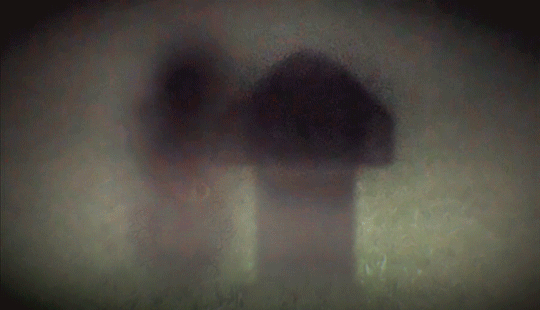
PREVIOUSLY, in the dark halls of ANIMATION NIGHT, you have born witness to such horrors as these...
Animation Night 25: HORROR, featuring Kakurenbo, Vampire Hunter D: Bloodlust, Birdboy: The Forgotten Children, and many episodes of Yamishibai
Animation Night 77: Once More, Halloween, featuring Blood: The Last Vampire, Seoul Station, The Wolf House, and Shoujo Tsubaki - and more Yamishibai...
Animation Night 129: Thrice the brinded cat hath mewed..., featuring Hellsing Ultimate, The Secret Adventures of Tom Thumb, Mad God, Ujicha's Violence Voyager, and guess what? Yamishibai...
Animation Night 176: The Hedge-Pigge Whin'd, a rather scuffed production which, contra the writeup, ended up just showing the Darkstalkers OVA from 1997. And some Yamishibai of course.
And now, my friends, and now... the witching hour is soon to be upon us once more, and it is time we revelled in the darkness and terror, for tonight is hallow'een, easily the best festival in the western calendar.
Many thanks go to @glitch-critter and @muzothecat, who provided me some excellent suggestions for animated horror that I have yet to see. Not that reruns would be the end of the world, there's some excellent shit on the list above I would be immensely glad to see again.
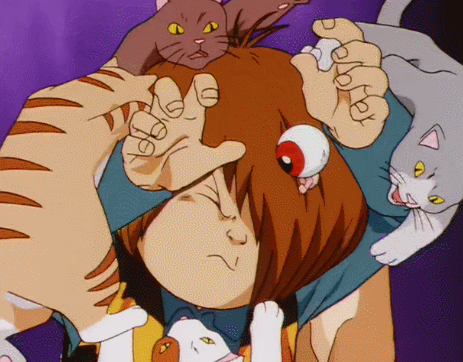
To begin with, we have the recently-released The Birth of Kitarō: The Mystery of GeGeGe (幾多郎誕生:ゲゲゲの謎). Which provides an excellent excuse to get into the subject of Kitarou. So let's begin our dark and sordid tale... well, it's actually a pretty positive tale, but that's not really in the spirit of things.
GeGeGe no Kitarō is a truly classic manga series dating back to the 60s, created by Shigeru Mizuki. But it's actually older still: the earliest incarnation of Kitarō is in a kamishibai performance written/illus. by Masami Itō and Keiyō Tatsumi back in 1933, called Hakaba Kitarō (Kitarō of the Graveyard). It tells the story of a ghost boy called Kitarō who lives in a graveyard; like many kamishibai it was aiming at straight up horror. Here's a board from the original (photo by translator Zack Davisson, thanks wikipedia):
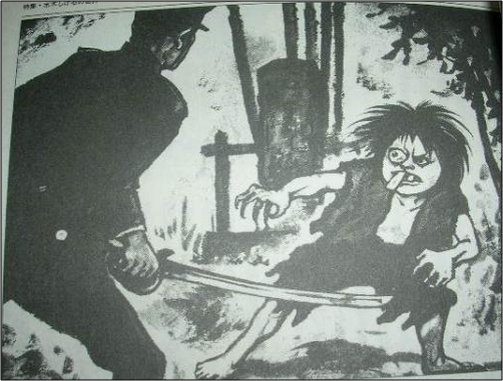
So, you know yōkai? You're reading this blog, so probably, but just in case, they are the various freaky spirits of Japanese folklore, from kappa and tengu to nekomata and chōchin-oiwa. And the reason why they are such a popular feature of modern popular culture (you all know what a kappa is, right?) is in large part due to this manga.
Shigeru Mizuki, born 1922, had a pretty wild life. He was drafted into the army in 1943 at age 21, and lost his left arm in a bombing the next year; during his recovery he made friends among the Tolai people of New Guinea. He came home after the war, and found work renting out an apartment building and drawing kamishibai on the side; gradually the kamishibai work took over. In 1953, his brother Sōhei moved in after being tried for war crimes (the timeline does not mention the outcome of the trial); in 1957 at age 35 he moved to drawing manga, debuting in rental manga with Rocketman.
Starting in 1960 at the behest of Mizuki's publisher, the Hakaba Kitarō manga adapted the story of the yamishibai, introducing a wider audience to ghost boy Kitarō with his floofy hair and little third eye on a stalk. It proved explosively popular (despite being at first deemed too scary for children), telling the stories of Kitarō's encounters with all kinds of yōkai. The state of English translations is a bit scattershot; some of it is available on mangadex.
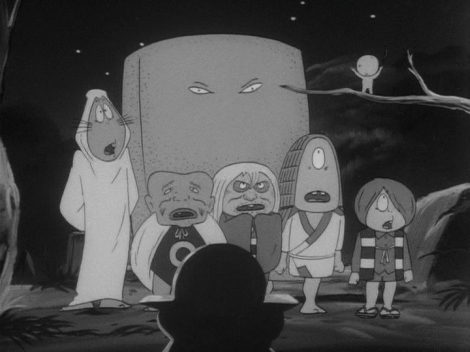
In 1964, at age 42, Mizuki debuted in serialised manga in Garo magazine - a name you might find familiar, the avant-garde magazine which also published authors like Suehiro Maruo (ero-guro mangaka, the author of Shoujo Tsubaki) and Hiroshi Masamura (the guy who made the cat manga we looked into on AN188). There, he rebooted the Kitarō manga, starting once again with the story of the birth of Kitarō. Before long he jumped over to the much larger Monthly Shonen Magazine, and retooled Kitarō to be more kid-oriented. From then on it's Kitarō city - and the immense success of the manga gave him the chance to regularly return to the newly combined state of Papua New Guinea.
In 1968, Kitarō arrived in animation land, one of Toei's early projects. It quickly became one of those classic famous Toei anime, you know the type, the kind of thing that every Japanese person of a certain age would have seen on TV. Mizuki himself composed the OP, and it continued to get sequels throughout the ensuing fifty years, with the most recent being in 2018. This is an old and widely beloved anime so there is a lot of it: the 1968 series accumulated 65 episodes, the third series in 1985-88 is the longest at 115, but the others are no slouch either; even the 2018 series pulled out a mighty 97.
As such, it's... perhaps a little daunting! But...
The Birth of Kitarō is a prequel to the 2018 series... and rather than being a spooky-fun kids anime, it's intended as a genuine horror story aimed at adults, presumably adults who grew up watching Kitarō, returning to the earliest Garo-era tone of the manga. Set in the 50s, the story sees salaryman Mizuki arrive in a village in pursuit of a mysterious medicine, where he finds the village ruled by an old superstitious family. Naturally, before long, murders start happening. And a mysterious white-haired man is somehow involved...
Seems like the perfect way to get into Kitarō. I missed the chance to see this film at Annecy this year, but it's already out on nyaa, so let's jump on it.
So that's our first act. What of our second?

Junk Head is a stop-motion scifi film pretty much enitrely solo animated by Takehide Hori who, at age 40, heard about Makoto Shinkai's solo-animated film Voices of a Distant Star (AN44), and was inspired to spend the next seven years working on a stop-motion scifi epic of his own. It tells of a cyborg from a future where humans have lost the ability to reproduce, venturing into a strange underground realm full of freaky creatures that, I'm told, invite comparisons to the art of Giger, Bosch, Escher and Gorey, and the films of Švankmajer (whose Alice we watched on AN50), Gilliam, and the Quay Brothers. del Toro lauded it as a 'work of deranged brilliance'.
Which is to say this is exactly the kind of thing we like to show here on Animation Night. I can't believe I didn't hear of this film before. Sources are not exactly abundant, but I was able to find a hardsubbed 720p version with a few seeds on it, so that's what we'll be watching tonight.
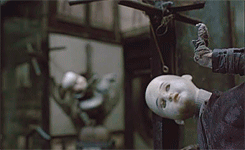
Speaking of the Brothers Quay, who enjoy a remarkably in-depth and thorough wiki page, they have yet to appear on Animation Night, and it's about time we remedied that! A pair of identical twins from the Pennsylvania who moved to the UK in 1969 to study at the RCA, they got their start in illustration before making a turn to stop motion film using bits of dolls and various other materials in the vein of Švankmajer.
They are incredibly prolific as a pair, making shorts in nearly every year from 1979 to 2021 (bar a couple of hiatuses). Most of their films are without dialogue, set instead to the music of Leszek Jankowski and a great many other other composers. They are huge book nerds too, adapting authors from Lem and Kafka to Emma Hauck; honestly there's a ton to dive into here and I will for sure be returning to these guys on a future Animation Night. Tonight, however, our pick will be Street of Crocodiles (2021), a musical piece in which a puppet walks through a desolate realm of "mechanical realities and manufactured pleasures", widely celebrated as one of their best films.
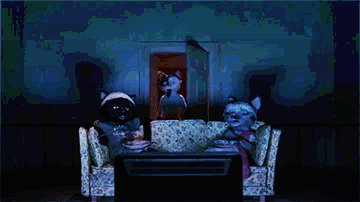
Stop motion seems to be a theme tonight, huh? Somehow, stop motion is just spookier than traditional animation. That theme continues with The House, an anthology piece for Netflix depicting three different stories taking place in the same house. Animated in London, each piece brings in a different director, respectively Emme de Swaef and Marc James Roels co-directing the first, Swedish director Niki Lindroth von Bahr the second and Mexican-British actress turned director Paloma Baeza for the third.
The stories span a few hundred years, from the 1800s to a flooded post climate change future. In each case, the house is the stage for tales of obsession and misguided ambition leading to disaster, whether it should befall anthro rats, humans or anthro cats. Widely praised for its animation and general weirdness, I'm quite excited to see what this mix has in store.
And returning of course will be Yamishibai, the wonderful long-running series of ridiculous cutout-animated creepypasta horror in the vein of old-school kamishibai boards. You know we gotta. And hey, if we're feeling in a really good mood at the end of the evening, I might bring Shoujo Tsubaki out of the vaults too. We shall see.
Animation Night 193 shall begin, with its gruesome course of animated horrors, at seventh hour.... which is to say 7pm UK time, just over four hours from the writing of this post. Be there, or be forever haunted by the ghosts of frames unseen (unless you gotta go trick or treat or something, we understand). The place? Upon the heath... of twitch.tv/canmom!
Hoooohhooohohoohooohooohohoooooooooo!
12 notes
·
View notes
Video
youtube
The Most Influential Comics Magazine! Garo!
2 notes
·
View notes
Text
Manga News from AnimeNYC 2023

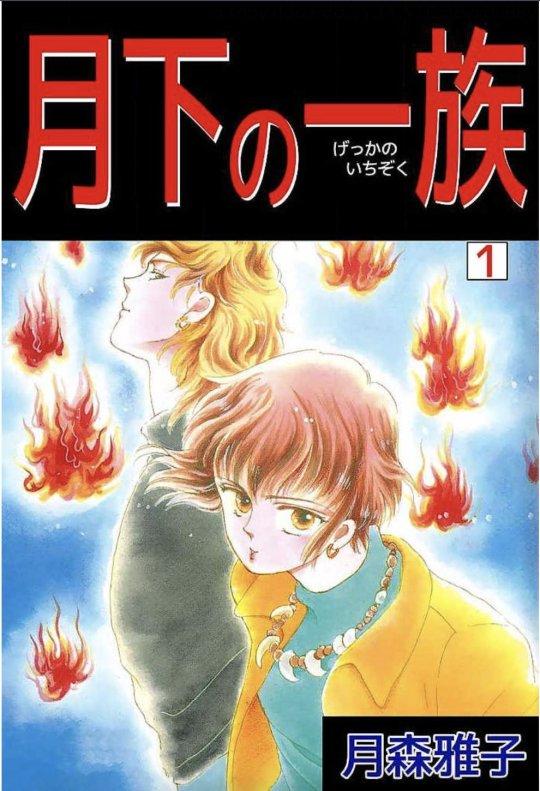
Starfruit Books announced several new titles, including Hideshi Hino's 90's horror The Red Snake, and 90s shoujo horror manga Clan Under The Moon by Tsukimori Masako. Both of these will be released under their Blood Orange horror imprint in 2024.
Drawn & Quarterly also announced that they'll be releasing Shirato Sanpei's iconic 1960s manga, The Legend of Kamuy!
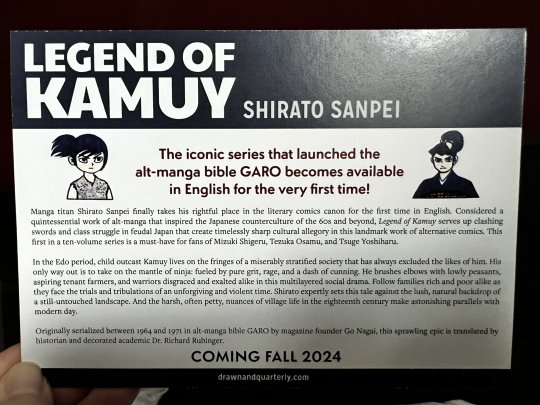
A hugely important work of "alternative" manga that ran in the famous underground GARO magazine, which was in fact named after one of Sanpei's characters! One of the spinoffs of this series, Kamui Gaiden, was one of the first manga titles to be published in the United States (by Eclipse & Viz Comics), as The Legend of Kamui in a flipped edition to read American-style. Kamuy will be released by D&Q in the fall of 2024.
#news#classic manga#Shirato Sanpei#Legend of Kamuy#Hideshi Hino#The Red Snake#Tsukimori Masako#Clan under the Moon#horror manga#shoujo horror#links out#AnimeNYC 2023
43 notes
·
View notes
Text
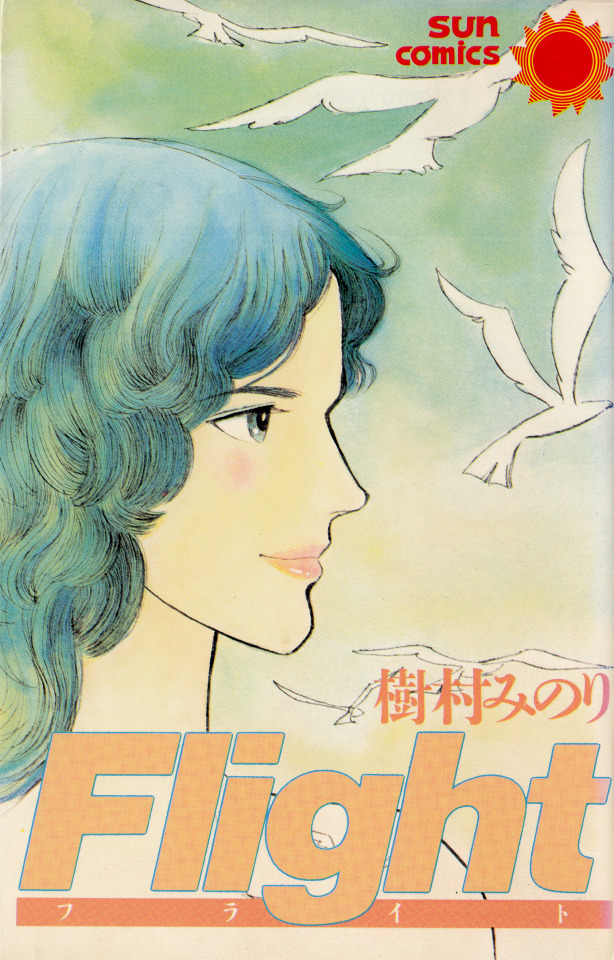


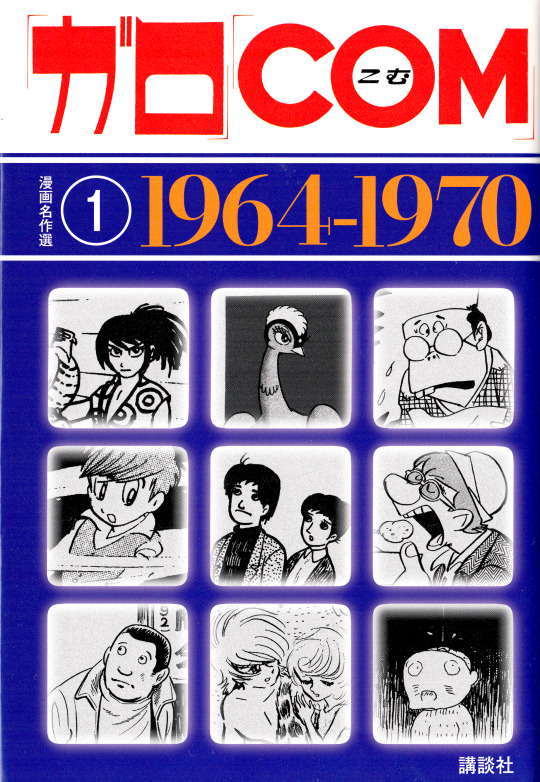
May-July 2023 roundup: Favorite one-shot comps edition
its not over until I get to the one shot collections.
Flight by Minori Kimura is my first one-shot collection by her and immediately I was in love. Smart, sensitive, and very unlike anything I’ve read from her peers or anyone working today. Really looking forward to reading more so I have more to say about her style and talents
Rainy Doori no Niji by Keiko Fukuyama is not a one-shot collection but an anthology of connected stories centered around a painting that keeps changing hands. I only had a vague familiarity of Fukuyama by way of a cover of hers having caught my eye at some point but I hadn't memorized her name so this acquisition was very much something out of the manga itself. Polished and charming character art that reflects her background in anime not to mention fun and creative storytelling reminiscent of the early generations of children’s anime. Once I finished I was pretty embarrassed that I didn’t knowing anything about her at all prior to this.
Suki Desu, Kono Shoujo Manga is a 5 volume anthology that’s very special because it wasn’t curated by a group of editors but Shoujo manga artists who submitted a one-shot either someone else made or from their own career that they’re particularly proud of. And truly there were nooooo misses, it covers a 50 year time span and gave me the chance to read the works of artists I already love, were curious about, or never even heard of before. The covers are also all illustrations Chiki Ooya made specifically for the anthology series. Since a bit more than 10 years I really hope someone does a project like this again I’d love to know what the manga artist currently in the scene would pick as their favorite shoujo manga one-shot. Check its anilist page to see the full table of contents!
“GARO” “COM” is another curated anthology focusing on the very iconic and formative magazines named in the title (if you read Mitsuru Adachi and Rumiko Takahashi’s relay manga from Came The Mirror you may remember them discussing how formative both magazines were for them). Volume 1 covers the established talents who made up the initial all-stars line up in each magazine, Shirato Sampei’s Kamui Den, Tezuka’s Phoenix, Shotaro Ishinomori’s Fantasy World Jun, and Shinji Nagashima’s Fuuten are previewed along with one-shots from other stars. Whereas volume 2 features some of the breakout talents from each magazine. It was a great way to get a taste of what reading these magazines were like, although if you keep up with the alt manga that gets licensed into English you might have read most of the Garo works already (and for Garo it was a rather tame selection). Absolutely another type of anthology series I wish someone would bring back, bc I want moooooore. Check its anilist page for the full lineup!
37 notes
·
View notes
Text
Nezumi Zoku - Tamura Shigeru
Tamura Shigeru's 1977 debut in the monthly magazine Garo.
4 notes
·
View notes
